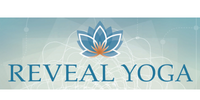The second limb of yoga is known as the niyamas , internal observances necessary for success in yoga. They include: sauca-cleanliness santosha-contentment tapas-discipline, burning desire, austerity svadyaya-study of the Self Isvara Pranidhana-Surrender When we practice yoga asana all niyamas come into play. Just as bathing is needed everyday so is the practice of asana to soothe …
When does yoga practice begin and when does it end? Some speculate that one’s yogic journey begins when yoga is known about, irregardless of whether one pursues a yogic path or not. So, let’s assume you heard about yoga and you want to learn more. What do you do? Do you look at a website …
When you breathe ,do you notice if breath is moving through the mouth or the nostrils? Does one nostril take in more air than the other nostril? While practicing yoga the breath may be smooth and soft. During a challenging pose the breath could be fast and labored. By opening and uplifting our torso while …
When learning yoga one uses movable and perceivable parts. We work with what we can see with our eyes. This includes, toes, soles of feet, heels, ankles, shins, calves, knees, thighs, hips, buttocks, pelvis, abdomen, chest, shoulders, elbows, hands, fingers, wrists, neck, and head. The back is more difficult to activate since it is hard …
Corpse pose known as śavāsana in Sanskrit is typically done at the end of an āsana class. Laying down on one’s back with the limbs outstretched is the basic architecture of the pose. We withdraw our senses from outside stimuli and retreat inward. By doing so we relax and restore our being. This state is …
How do we let go of judgements and come closer to acceptance? When can we move past self-comparison with others and reach self-understanding? Can we recall a time when we attempted a yoga pose that felt impossible? We did it and our posture did not look like the demonstration? What was the reaction? Sometimes those …
Practicing Yoga poses can be a way to release stiffness in muscles and joints. For a muscle group to extend one or more muscles must contract. For instance, when we draw our knee caps upward, the quadriceps are engaged. When the frontal thigh contracts the back of thigh can release. In the picture below the …
